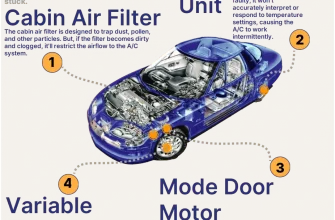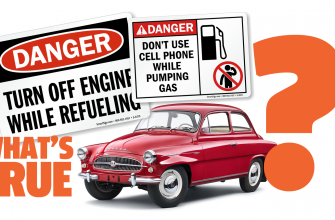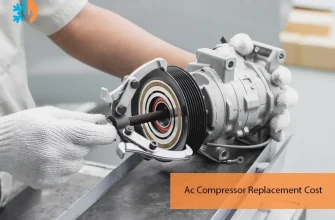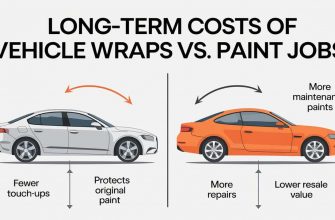It’s a scenario that many drivers dread: you hop into your car, turn the key, and instead of the comforting rumble of the engine, you hear silence. Yet, oddly enough, the radio blares your favorite tunes and the lights shine bright. What’s going on? Below, we delve into the common culprits behind this perplexing issue and guide you through troubleshooting steps that could get you back on the road.
- Understanding the Basics
- Step-by-Step Troubleshooting
- 1. Check the Battery
- 2. Inspect the Starter
- 3. Evaluate the Fuel System
- 4. Test the Ignition System
- When to Seek Professional Help
- The Art of Storytelling
- Understanding Your Audience
- The Importance of Research
- Content Planning and Structure
- Writing with Purpose
- Finalizing and Publishing
- Advanced Troubleshooting Techniques
- 1. Examine the Fuses and Relays
- 2. Check the Neutral Safety Switch
- 3. Investigate the Anti-Theft System
- 4. Test the Engine Control Unit (ECU)
- Prevention Strategies
Understanding the Basics
When a car won’t start but the electrical systems seem to be functioning, the problem often lies beyond the obvious. Here are some key areas to inspect:
- Battery Issues: Even if the radio and lights work, the battery may not have enough power to start the engine. A battery can have a low charge or be nearing the end of its lifespan.
- Starter Motor: The starter is responsible for turning the engine over. If it’s malfunctioning, you may hear a clicking sound or nothing at all when you turn the key.
- Fuel System: If the engine isn’t getting fuel, it won’t start. This could be due to a clogged fuel filter or a failing fuel pump.
- Ignition System: Problems with the ignition switch or spark plugs can prevent the car from starting, even if the electrical systems appear to be working.
Step-by-Step Troubleshooting
Follow these steps to diagnose the issue effectively:
1. Check the Battery
First, ensure your battery is in good condition:
- Look for corrosion on the battery terminals. If you see any, clean them with a mixture of baking soda and water.
- Use a multimeter to check the voltage; a healthy battery should read around 12.6 volts. If it’s lower, consider jump-starting the vehicle.
2. Inspect the Starter
If the battery is fine, the next suspect is the starter:
- Listen for any clicking sounds when you turn the key. A single click may indicate a faulty starter.
- Try tapping the starter gently with a hammer or wrench. Sometimes, this can free up a stuck solenoid.
3. Evaluate the Fuel System
Next, check if fuel is reaching the engine:
- Turn the key to the “on” position (without starting), listen for a humming sound from the fuel tank. If you don’t hear anything, your fuel pump may be faulty.
- Consider checking the fuel filter for clogs, especially if your car has high mileage.
4. Test the Ignition System
If everything else checks out, it’s time to look at the ignition:
- Turn on the dashboard lights. If they flicker or go out when you try to start, the ignition switch may be faulty.
- Check the spark plugs; remove one and inspect for wear or damage.
When to Seek Professional Help
If you’ve followed these troubleshooting steps and still haven’t resolved the issue, it may be time to consult a professional mechanic. They can perform a comprehensive diagnostic test to pinpoint the exact problem.
Encountering a car that won’t start despite working lights and a radio can be frustrating, but with a methodical approach to troubleshooting, you can often identify the underlying issue. Whether it’s a battery problem, starter malfunction, fuel delivery issue, or ignition failure, understanding these key components will empower you to tackle the problem head-on.
Stay safe and happy driving!
As a Content Generation Specialist, SPARKLE combines creativity with a strategic approach to deliver captivating narratives that resonate with audiences. The process of crafting content is not merely about stringing words together; it’s about creating an experience that engages and informs.
The Art of Storytelling
Every piece of content tells a story, whether it’s a blog post, article, or social media update. Understanding the narrative structure is crucial. Here are the essential elements:
- Character Development: Engaging characters draw readers in and create an emotional connection.
- Plot Development: A well-structured plot maintains interest and guides the audience through the content.
- Conflict Resolution: Every story has challenges; showcasing how they are resolved adds depth and intrigue.
- Emotional Impact: Evoking emotions keeps readers engaged and encourages sharing.
Understanding Your Audience
Creating compelling content starts with understanding who your audience is. Here are some tips:
- Conduct audience research to identify preferences and pain points.
- Create personas to represent different segments of your audience.
- Engage with your audience through surveys and feedback to refine your approach.
The Importance of Research
Research serves as the backbone of quality content. It ensures accuracy and enriches the narrative. Here’s how to approach research:
- Topic Research: Dive deep into the subject matter to gather insights and data.
- Audience Research: Understand what resonates with your target demographic.
- Format Research: Explore different formats to present information effectively.
- Tone Research: Adjust your tone to align with your audience’s expectations.
Content Planning and Structure
Once research is complete, it’s crucial to plan and outline your content:
- Outline the main points to ensure a logical flow.
- Identify key messages that need to be communicated.
- Determine the structure based on the content type (e.g., listicles, how-to guides).
- Set the tone and style to maintain consistency throughout the piece.
Writing with Purpose
The writing phase is where everything comes together. Here are some strategies:
- Draft Creation: Write freely in the initial draft to get ideas flowing.
- Revision: Review and refine your content for clarity and coherence.
- Punchy Writing: Use impactful language to keep readers engaged.
- Creative Expression: Infuse personality and creativity into your work.
Finalizing and Publishing
Before hitting publish, ensure your content is polished:
- Conduct a final review for grammar and spelling errors.
- Format the content to enhance readability (headings, bullet points, etc.).
- Optimize for SEO to improve visibility online.
- Share your content through appropriate channels to reach your audience.
SPARKLE is dedicated to transforming ideas into compelling narratives that captivate and inform. By understanding the audience, conducting thorough research, and employing effective writing strategies, every piece of content can shine. Let your creativity flow and make an impact with every word!
This HTML document outlines the process of content generation as practiced by SPARKLE, highlighting key aspects of storytelling, audience engagement, research, planning, writing, and finalizing content. Each section is designed to be informative and engaging, reflecting SPARKLE’s style and objective.
Advanced Troubleshooting Techniques
When a car refuses to start, especially when the radio and lights are operational, the problem can often be elusive. However, there are advanced troubleshooting techniques that can help you dive deeper into the potential issues.
1. Examine the Fuses and Relays
Sometimes, the issue may be related to a blown fuse or a malfunctioning relay:
- Locate the fuse box and check for any blown fuses that correspond to the ignition system, starter, or fuel pump.
- Test the relays associated with these systems using a multimeter or by swapping them with similar functioning relays in the box.
2. Check the Neutral Safety Switch
If you’re driving an automatic transmission vehicle, the neutral safety switch can prevent the car from starting:
- Ensure that the gear selector is in “Park” or “Neutral.”
- Try starting the vehicle while gently moving the gear shift back and forth.
3. Investigate the Anti-Theft System
Modern vehicles often come equipped with anti-theft systems that can inadvertently prevent starting:
- Look for any warning lights on the dashboard indicating an activated security system.
- Consult your owner’s manual for instructions on resetting or disarming the anti-theft system.
4. Test the Engine Control Unit (ECU)
The ECU controls the engine’s functions and can sometimes lead to starting issues:
- Consider using an OBD-II scanner to check for any error codes that may indicate a malfunction.
- Look for updates or recalls related to the ECU from your vehicle’s manufacturer.
Prevention Strategies
After troubleshooting, it’s essential to implement prevention strategies to avoid future starting issues:
- Regular Maintenance: Schedule routine check-ups to ensure that all components of the battery, starter, and ignition system are functioning optimally.
- Battery Care: Keep battery terminals clean and free from corrosion, and check the battery’s health regularly, especially before winter.
- Fuel Quality: Use high-quality fuel and keep your tank at least a quarter full to prevent sediment buildup and fuel pump strain;
Having a car that won’t start, despite having a working radio and lights, can be a complex issue, but with systematic troubleshooting, you can identify the problem. From checking the battery and starter to examining the fuel and ignition systems, each step brings you closer to a solution. Remember, while DIY troubleshooting can be effective, don’t hesitate to reach out to a professional mechanic if needed. A little proactive care can go a long way in keeping your vehicle running smoothly.
So the next time your car plays hard to get, remember these tips and troubleshoot with confidence!









Great breakdown of troubleshooting steps! I appreciate how clear and concise it is. Definitely saved me a trip to the mechanic!
Super informative article! The step-by-step guide made it simple for someone like me who knows very little about cars. Highly recommend!
This article is a lifesaver! The troubleshooting steps are easy to follow, and I managed to fix my car on my own thanks to your advice.
Fantastic guide! The tips on checking the battery and starter were particularly useful. Thank you for sharing this knowledge!
Excellent information! I never thought about checking the fuel system, but now it makes so much sense. Very informative read!
A well-written piece that covers all the bases. I appreciate the practical tips and will definitely refer back to this in the future!
This article is incredibly helpful! I had no idea where to start when my car wouldn’t start, but now I feel more confident tackling the issue.
I love how you explained the electrical systems vs. starting issues. It really helped me understand what might be wrong with my car.